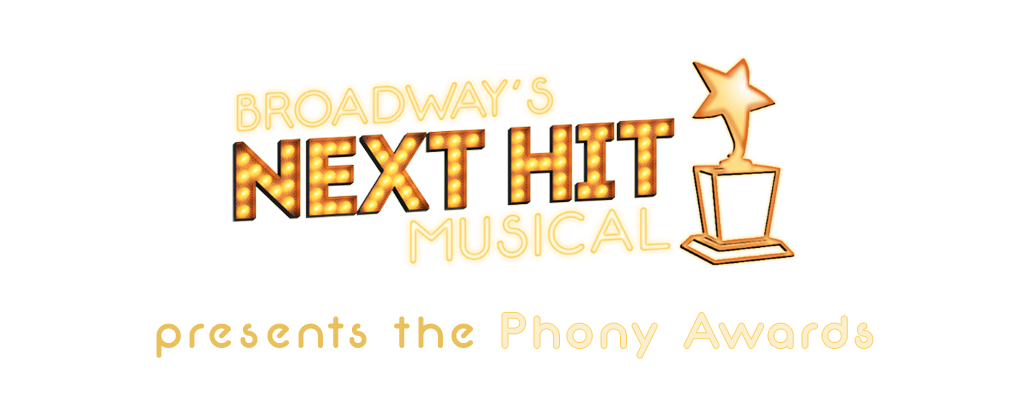When we are writing songs on the spot, it is helpful to know song structures. It's sort of like knowing different plays in sports - you may not know how it's going to play out exactly, but you have a framework to follow.
One of the song structures that we work within is a tag line song. Tag line songs bring to mind classic musical theatre songs, songs from the American Songbook, and even blues songs. This structure has worked for over a hundred years and can work when you only have miliseconds to formulate your song.
The "tag line" or "tag" of a song is a lyric that is repeated in the same place every verse. A tag line song usually has two sections - a verse and a bridge. Often times used in a verse-verse-bridge-verse order. But not always. We'll get to that.
Tag Line Technique #1: Set Up Your Tag Line like a Punch line.
In Broadway's Next we ask the audience to make up titles of songs. Knowing your song title definitely comes in handy since traditionally the tag line is usually the title of the song. Tag lines can happen anywhere in the verse; for the example we're going to use, it will be at the end of the verse. Our example is from a show we did in New York City a few years back. Rob Schiffmann was given the song title "The Day Lindsay Lohan and Winona Ryder Went Shopping."
Think of your verse as four lines (it can be more, but we're keeping it simple). And we know our last line already - that's the tag line. While singing your verse you want your third line to set up a rhyme for the tag line. It's like setting up a punch line for a joke. And, since we do improve comedy most of the time that's exactly what we're doing.
We can see a very clear tag line structure in the song Rob Schiffmann improvised "The Day Winona Ryder and Lindsay Lohan Went Shopping." Let's take a look at the verse.
Verse 1
Line 1 (sets up a rhyme)
Back in the days so many years AGO.
Line 2 (answers the rhyme with a joke)
There was a girl who liked to steal things, and another girl who did BLOW.
Line 3 (b - which will rhyme with the tag)
But the law came in and those things the law was STOPPING
Line 4 (b - tag line becomes the punch line to the joke.)
One the day Winona Ryder and Lindsay Lohan went SHOPPING.
You can hear from the audience's reaction that it's satisfying and funny to land the joke there. Your second verse will have the same structure - and since it's a Tag Line, you know what your last line will be and that the preceding line will rhyme with it.
Verse 2
Now a little year later 'Nona tried to see
the life she lied before then in 1983
her career'd gone down the toilet it ahd all just taken a WHOPPING
because of the day Winona Ryder and Lindsay Lohan went SHOPPING
Note: It is possible to do a first line tag (think "Somewhere Over the Rainbow").
Tag Line Technique #2: Make distinct changes in the bridge of the song
After you've done two verses, in a traditional tag line song it's time for a bridge. This is where the melody will change - if your rhythm was faster and more stoccato, now it's time to extend your words out more logato. You can change up your rhyme scheme. You can show a different side of the character, or of the story that is being told. It's a nice diversion, music-wise and preps the audience for the return of the melody they are expecting when the verse comes back around.
This is also an EXCELLENT opportunity for a turn of phrase to occur. If your song title is "Never Together" and in your verses you sing about how you and a lover are never together, the bridge can be the moment when you discover that you were never together - like never in sync with one another - in the first place.
Bridges are GREAT places for experimentation!
Tag Line Technique #3: Use a Melodic Hook to make your song Brain Dead Proof
Sure, rhyme is great and all, but what if your brain is going blank? What if you can't possibly rhyme your tag line? The answer is melody. A melodic hook happens when the tune has something repeatable and memorable. When we talk about tag lines, we are talking about lyrical hooks - the words that are consistently repeated at the end of the verse. When we talk about melodic hooks it's the tune that is consistently repeated. By creating a melodic hook in your song, you make it "brain dead proof." If your brain goes dead and you don't have a rhyme, you can hook into the melody that you've created and the audience will still be satisfied because their ears will know what to expect musically.
In Verse 3 of our example Rob Schiffmann doesn't even USE the tag line, but he's established the pattern enough melodically that it's not jarring.
It should be noted that often a tag line song will end after the third verse. "The Day Winona Ryder and Lindsay Lohan Went Shopping" doesn't. If the song were to end here, it would be anticlimactic. Rob knows that the story of the song isn't over, and he continues on until the story is told properly.
Once the story has found it's ending, it's easy to wrap up with the melodic hook and the tag line - and really sell the ending as well.
Check out some more examples
We created a playlist on SoundCloud to give you some more examples of tag line songs that we created on the spot onstage.




